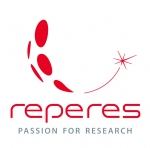Research in behavioural economics and neuroscience have brought to light the fundamental role of automatisms in consumer choices: many of our decisions are taken without resorting to conscious thought (Daniel Kahneman’s “System 1”).
The key to the success of brands therefore depends on the creation of REFLEX ASSETS® which represent the automatisms the brand has succeeded in generating in the minds of its consumers.
These REFLEX ASSETS® can be of different types:
- Immediate associations with a category of product
“I want to buy a plane ticket” => “I think Easyjet and I go to their web site”
- Immediate associations with a needstate
“I want to organise a festive drinks party easily” => “I think of the guacamole and humus of the Blini brand”
- Iconic identification codes
The Nike comma, the 3 stripes of Adidas, the apple of Apple, the Heineken green...
These spontaneous associations play a defining role in the behaviours involved in identifying and purchasing products and therefore directly impact the financial results of companies. They therefore represent a real asset for the brand in the accounting sense of the term.
Managing REFLEX ASSETS is essential for brands and requires:
- Identifying and weighting them,
- Ensuring that marketing actions contribute to the effective management of these assets (strengthening favourable aspects and if necessary reducing unfavourable aspects)
A unique identification and weighting approach to REFLEX ASSETS with the R3M score
Following 3 years of R&D, Repères has developed an exclusive method making it possible to measure the emotional activation of an experience or stimulus: the R3M score
- A resolutely “System 1” approach without any induction: the respondent simply gives 3 words which spring to mind after an experience or when thinking of a brand,
- We then identify the respondent’s emotional activation thanks to a multi-criteria algorithm: grammatical nature of the words quoted, logic behind the terms used (description, judgement, metaphor, etc.), valency, rank, consensus, etc.
- An analysis of the words producing the greatest impact in terms of activation, makes it possible to interpret the R3M score and draw operational conclusions.
Tested on more than 50 categories and in 3 languages, the R3M emotional activation score has proved to be more effective than the standards for evaluating conventional actions such as global ratings, satisfaction ratings, etc. producing:
- A more detailed discrimination between stimuli tested,
- The identification of weak signals thanks to a totally open and unbiased questioning approach,
- The possibility of detecting extremely effective offers (no side effects) compared with reporting scales which have limits (when measuring satisfaction ratings it is practically impossible to outrank an offer which is already greatly appreciated)
- A data collection method which is simple and adapted to all categories of respondents, including children, and adapted to every situation: online, face to face, on the phone, in the respondent’s home, on site, etc.
Adapted to addressing the issue of the REFLEX ASSETS of brands, the method consists of simply asking respondents which 3 words spring to mind when they think of the brand, with several cells associated:
- A sample cell without stimuli, where only the brand is mentioned,
- A sample cell for each of the marketing actions to evaluate where the question of the 3 words linked to the brand is raised after viewing a stimulus or having undergone an experience: advertising, packaging, promotion, visit of a point of sale or web site, etc.
The system is very effective (only 1 question!) and easy to deploy.
Operational Insights
The approach makes it possible:
- To identify the brand’s key dimensions which leave a mark in the mind of the consumer (REFLEX ASSETS) and constitute drivers in the decision-making process,
- To measure to what extent marketing actions have an impact on these assets: reinforcement, reduction, the creation of new associations, etc.
Visual representation of the Reflex Assets® of a beer brand (fictional example)
The brand can thus validate the overall consistency of its marketing actions in regards to its strategy.
It also benefits from operational recommendations for validating the continuation of a marketing action: advertising campaign, change of packaging, display in the shop, etc.
A verbatim account of customer statements
“Thank you for this presentation. In 3 words: surprising, atypical, powerful”
Jean-Christophe Bertrand, Marketing Director of Labeyrie.
Contact us to get to know the REFLEX ASSETS of your brand!


